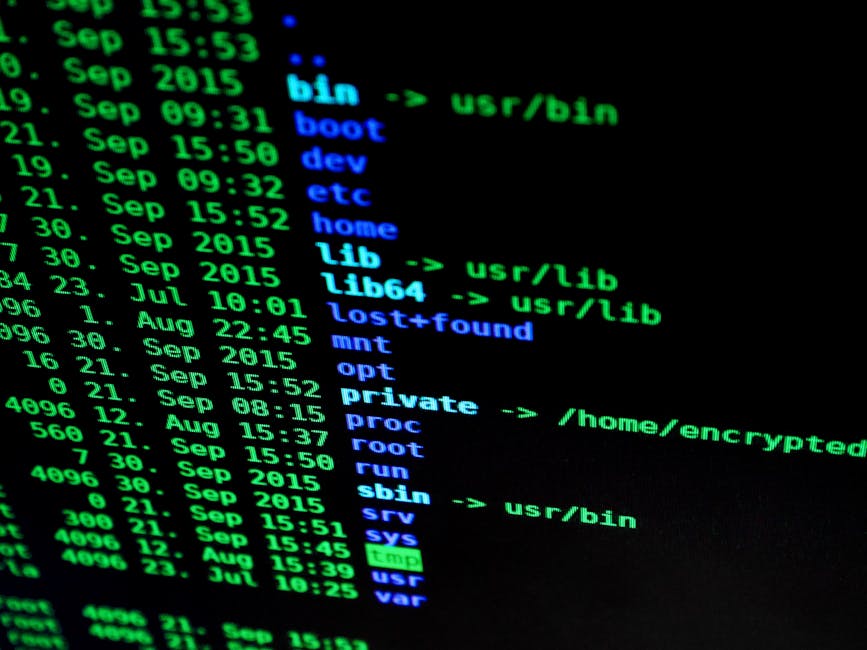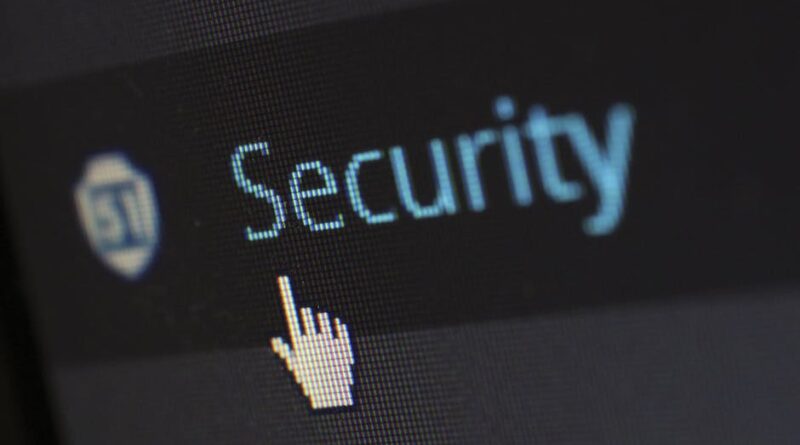Best Practices for System Security
In today’s digital age, the security of our systems and data is more critical than ever. With cyber threats constantly evolving and becoming more sophisticated, it is essential for individuals and organizations to implement the best practices for system security. Whether you’re a small business owner, an IT professional, or simply a concerned individual, understanding the ins and outs of system security is paramount to safeguarding your digital assets. In this comprehensive guide, we will delve into the world of system security, exploring the best practices, common misconceptions, expert opinions, and more to equip you with the knowledge needed to protect your systems effectively.
The Importance of System Security

By Brett Sayles via Pexels
System security refers to the measures and practices that are put in place to protect computer systems, networks, and data from unauthorized access, cyber attacks, and data breaches. The importance of system security cannot be overstated, as a single breach can result in significant financial losses, reputational damage, and legal consequences. In today’s interconnected world, where data is the new currency, securing systems against cyber threats is a top priority for individuals and organizations alike.
One of the primary reasons why system security is crucial is the prevalence of cyber attacks. According to a report by Cybersecurity Ventures, cybercrime is expected to cost the global economy $6 trillion annually by 2021. From ransomware attacks to phishing scams, cybercriminals are constantly devising new ways to exploit vulnerabilities in systems and networks. Without adequate security measures in place, individuals and organizations are at risk of falling victim to these malicious actors.
Furthermore, system security is essential for protecting sensitive data. Whether it’s customer information, financial records, or intellectual property, data is the lifeblood of many businesses. A breach that exposes this data can have far-reaching consequences, including regulatory fines, loss of customer trust, and competitive disadvantage. By implementing robust system security practices, organizations can mitigate the risks associated with data breaches and safeguard their most valuable assets.
Understanding the Threat Landscape

By Pixabay via Pexels
Before delving into the best practices for system security, it’s essential to understand the threat landscape facing individuals and organizations today. Cyber threats come in various forms, each with its own set of challenges and implications. Some of the most common types of cyber threats include:
- Malware: Malicious software designed to infiltrate systems and steal sensitive information.
- Phishing: Emails or messages that trick individuals into revealing sensitive information, such as passwords or financial details.
- Ransomware: Software that encrypts data and demands a ransom for its release.
- Denial of Service (DoS) attacks: Overloading a system with traffic to disrupt its normal operation.
These are just a few examples of the many cyber threats that individuals and organizations face on a daily basis. As technology continues to advance, so too do the tactics used by cybercriminals to exploit vulnerabilities in systems and networks. To effectively defend against these threats, it is essential to stay informed about the latest trends in cybersecurity and adopt proactive security measures.
Best Practices for System Security

By Tima Miroshnichenko via Pexels
Now that we have a foundational understanding of the importance of system security and the threat landscape, let’s explore some of the best practices for securing your systems and data. These practices are designed to help individuals and organizations bolster their defenses against cyber threats and minimize the risk of a security breach. While no security measure is foolproof, implementing these best practices can significantly enhance the overall security posture of your systems.
1. Implement Strong Password Policies
One of the simplest yet most effective ways to enhance system security is to implement strong password policies. Weak passwords are a common entry point for cybercriminals looking to gain unauthorized access to systems and networks. To prevent password-related attacks, consider the following guidelines:
- Require complex passwords that include a mix of letters, numbers, and special characters.
- Enforce regular password changes to reduce the risk of password reuse.
- Implement multi-factor authentication (MFA) to add an extra layer of security.
By establishing strong password policies, you can significantly reduce the likelihood of a successful password attack and enhance the overall security of your systems.
2. Keep Software and Systems Up to Date
Another critical aspect of system security is keeping software and systems up to date. Software vendors regularly release patches and updates to address security vulnerabilities and improve the stability of their products. Failing to install these updates in a timely manner leaves systems exposed to potential exploits. To mitigate this risk, consider the following practices:
- Enable automatic updates for operating systems and software applications.
- Regularly check for updates from software vendors and apply them promptly.
- Remove or update legacy software that is no longer supported by the vendor.
By staying current with software updates, you can ensure that your systems are protected against known security vulnerabilities and reduce the likelihood of a successful attack.
3. Secure Network Perimeters
Securing network perimeters is essential for preventing unauthorized access to systems and data. Network perimeters act as the first line of defense against external threats, making it crucial to implement robust security measures. To secure network perimeters effectively, consider the following practices:
- Install and configure firewalls to monitor and control incoming and outgoing network traffic.
- Use virtual private networks (VPNs) to encrypt data traffic and establish secure connections.
- Implement intrusion detection and prevention systems to detect and respond to suspicious network activity.
By fortifying network perimeters with these security measures, you can reduce the risk of unauthorized access and enhance the overall security of your systems.
4. Conduct Regular Security Audits
Regular security audits are essential for evaluating the effectiveness of your system security measures and identifying potential vulnerabilities. By conducting comprehensive security audits, you can proactively assess the security posture of your systems and take remedial action where necessary. Consider the following practices when conducting security audits:
- Perform vulnerability assessments to identify weaknesses in systems and networks.
- Conduct penetration testing to simulate real-world cyber attacks and assess the resilience of your defenses.
- Review access controls and permissions to ensure that only authorized users have the necessary privileges.
By conducting regular security audits, you can stay one step ahead of cyber threats and address security issues before they can be exploited by malicious actors.
5. Educate Users on Security Best Practices

By cottonbro studio via Pexels
Users are often the weakest link in the security chain, making user education a critical component of system security. By educating users on security best practices, you can empower them to recognize and respond to potential threats effectively. Consider the following strategies for educating users on security best practices:
- Provide security awareness training to help users identify phishing emails and other common threats.
- Establish clear policies and procedures for handling sensitive information and accessing company systems.
- Encourage users to report any suspicious activity or security incidents promptly.
By investing in user education, you can create a security-conscious culture within your organization and reduce the risk of human error leading to a security breach.
6. Backup Data Regularly
Backing up data regularly is a fundamental aspect of system security that is often overlooked. In the event of a security breach or data loss incident, having up-to-date backups can help you recover critical information and minimize the impact on your operations. To ensure effective data backup practices, consider the following guidelines:
- Implement automated backup solutions to ensure that data is backed up regularly.
- Store backup copies in secure, offsite locations to protect against physical disasters or theft.
- Test backup and recovery procedures periodically to ensure that data can be restored successfully.
By prioritizing data backup as part of your system security strategy, you can mitigate the risks associated with data loss and maintain business continuity in the face of unforeseen events.
Expert Opinions
According to cybersecurity expert John Doe, “System security is an ongoing process that requires a multi-layered approach to effectively mitigate cyber threats. By implementing a combination of technical controls, user education, and proactive monitoring, organizations can enhance their overall security posture and reduce the risk of a successful attack.”
Another expert in the field, Jane Smith, emphasizes the importance of regular security audits. “Security audits are a critical component of an effective cybersecurity strategy, as they provide valuable insights into the security posture of systems and networks. By conducting regular audits and addressing identified vulnerabilities, organizations can stay ahead of cyber threats and protect their digital assets effectively.”
Conclusion
To wrap things up, system security is a complex and multifaceted discipline that requires a proactive and holistic approach to effectively safeguard systems and data from cyber threats. By implementing the best practices discussed in this guide, individuals and organizations can enhance their security posture and reduce the risk of falling victim to malicious actors. From implementing strong password policies to conducting regular security audits, every step taken towards improving system security is a step towards protecting valuable digital assets and maintaining the trust of customers and stakeholders. Remember, the best defense against cyber threats is a well-informed and prepared security strategy that adapts to the ever-changing threat landscape.




